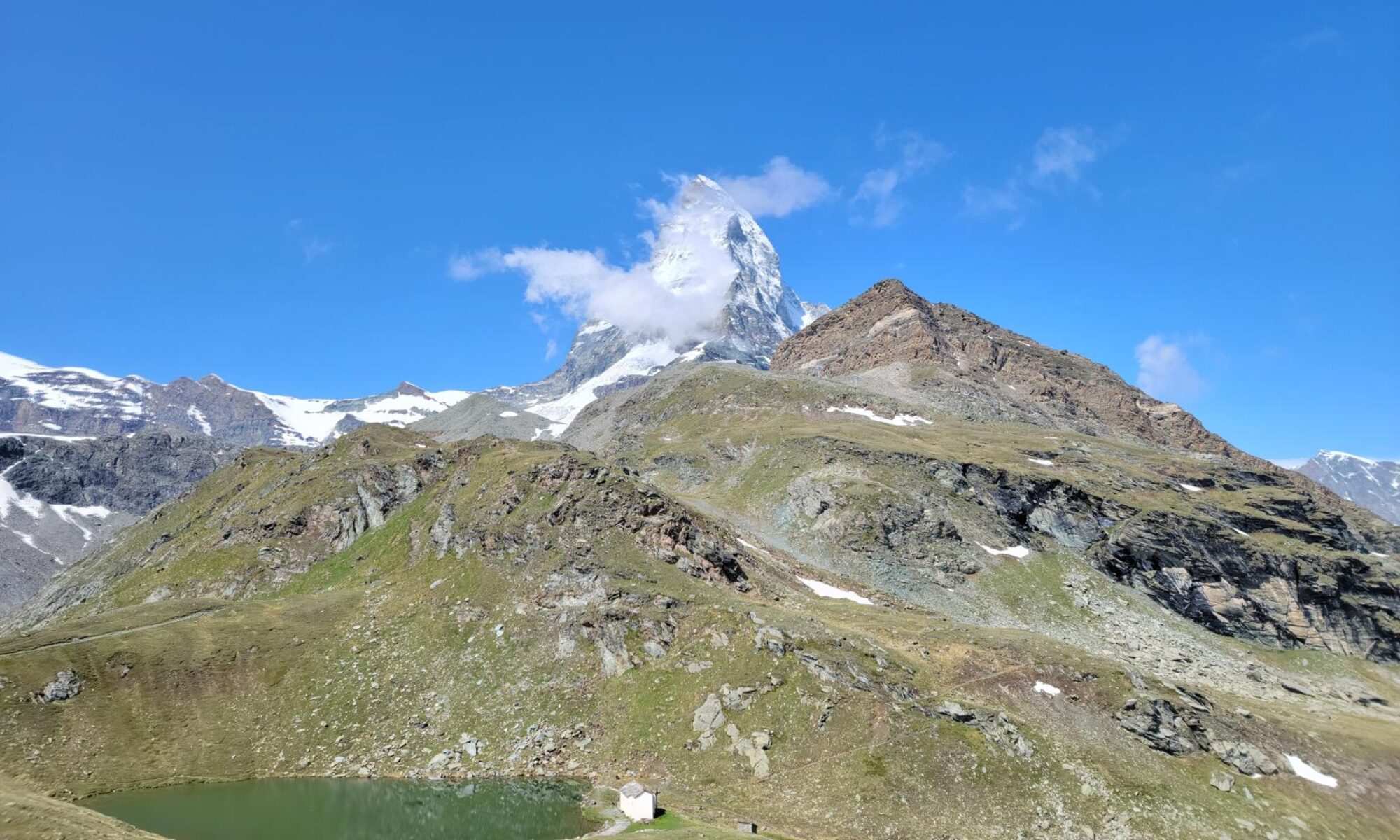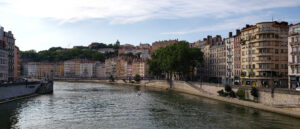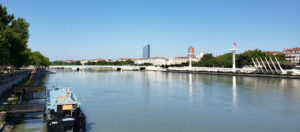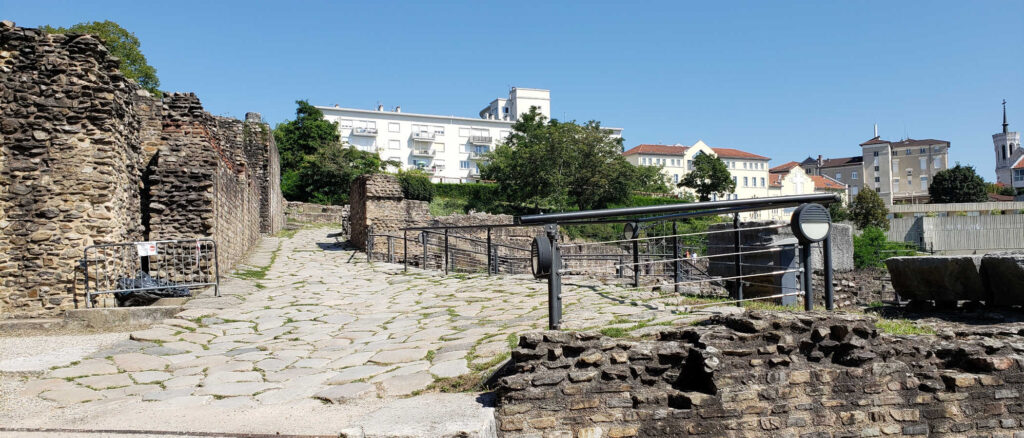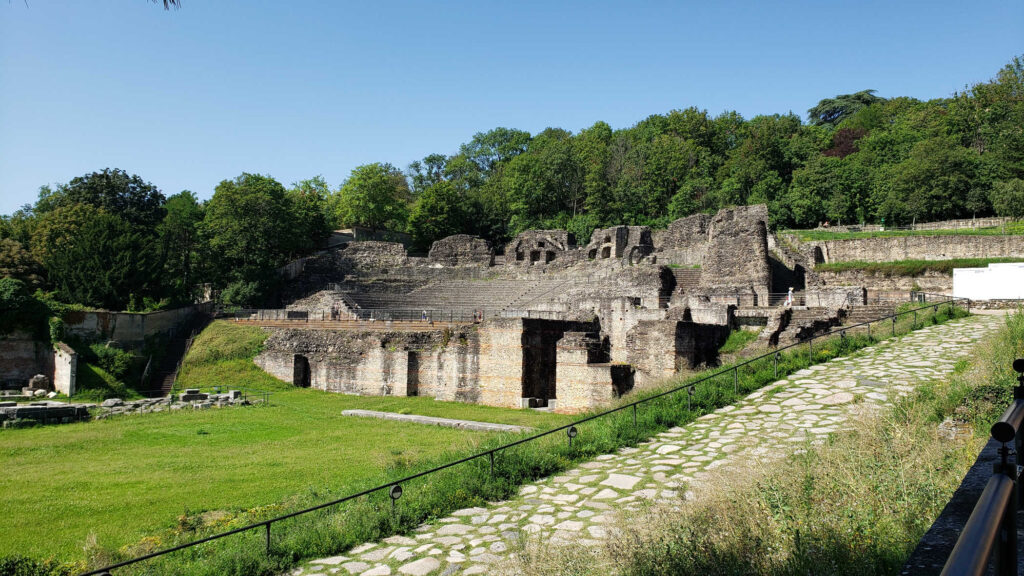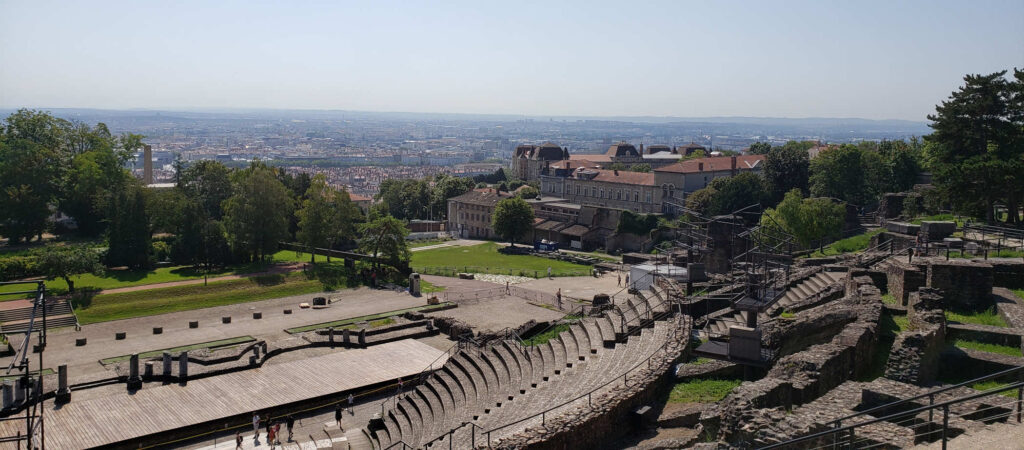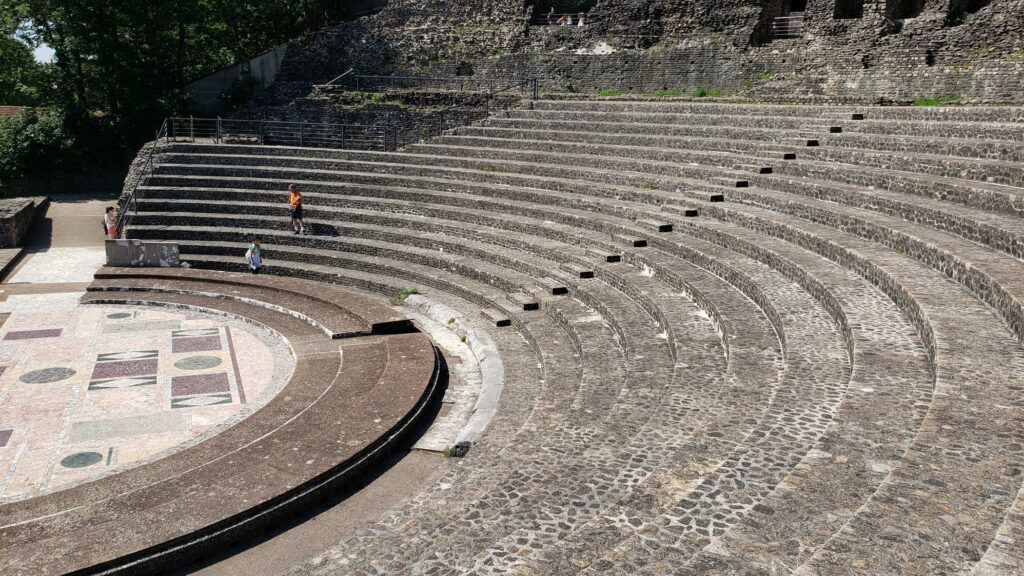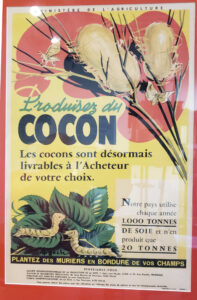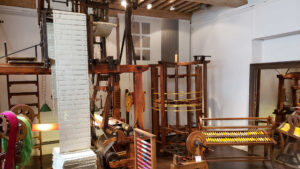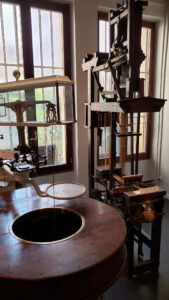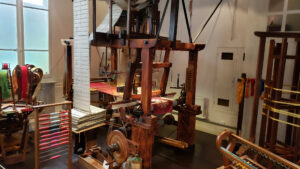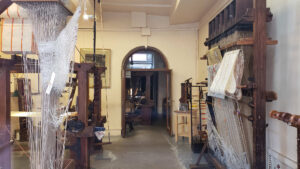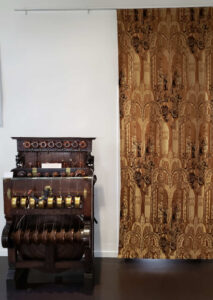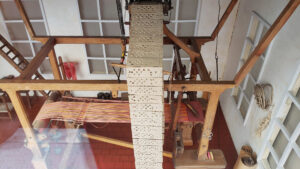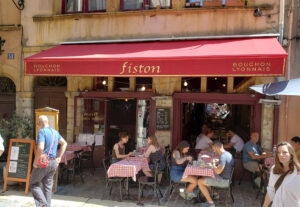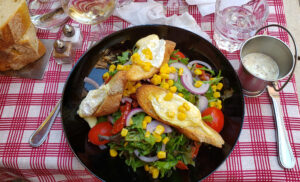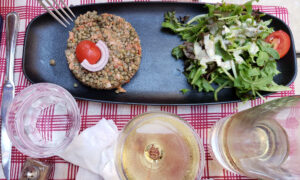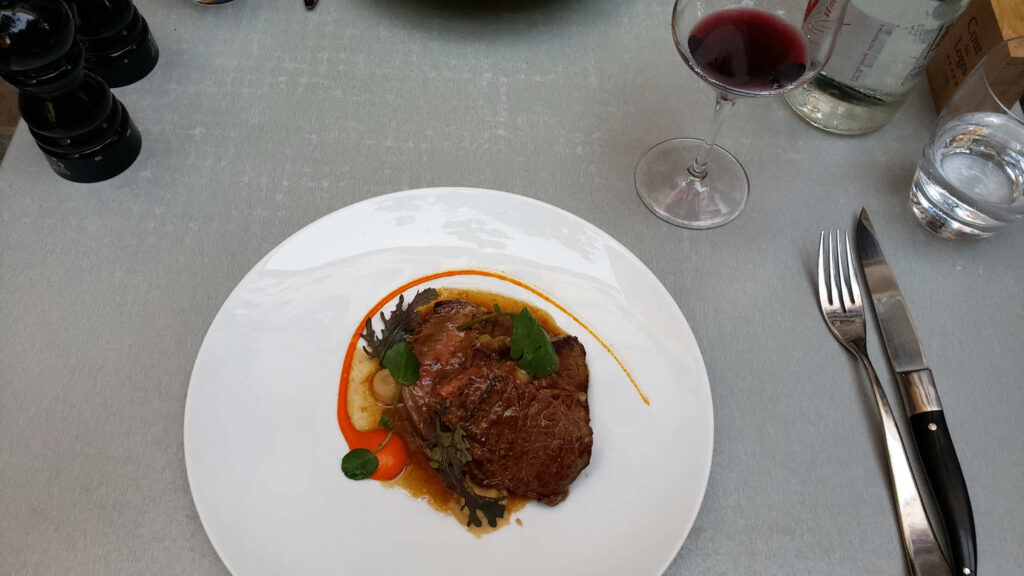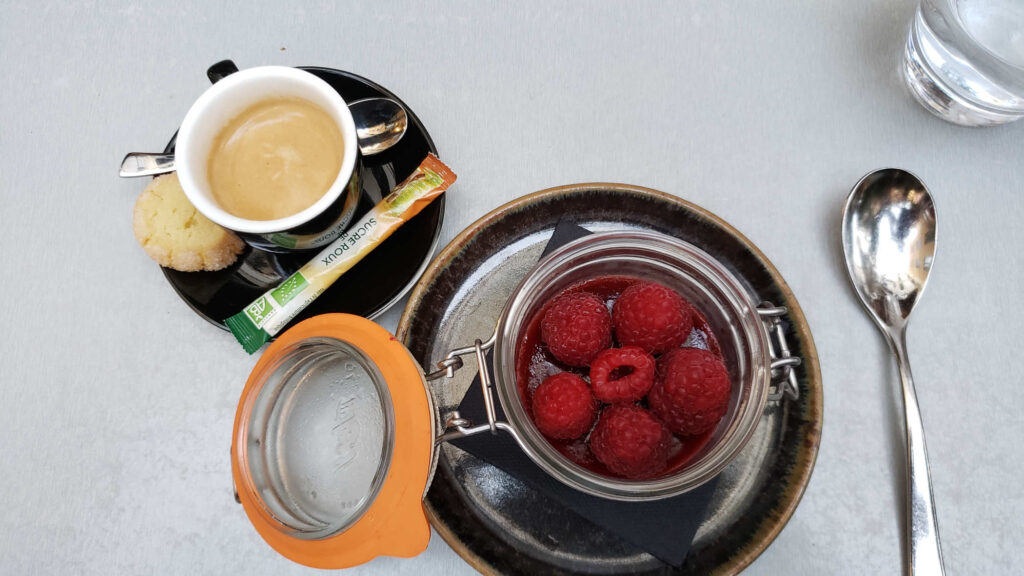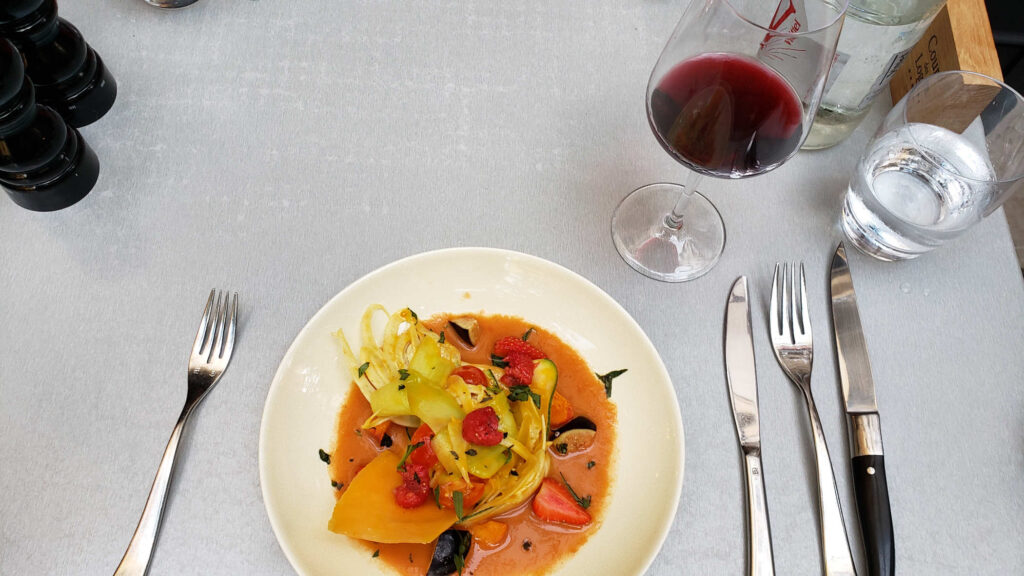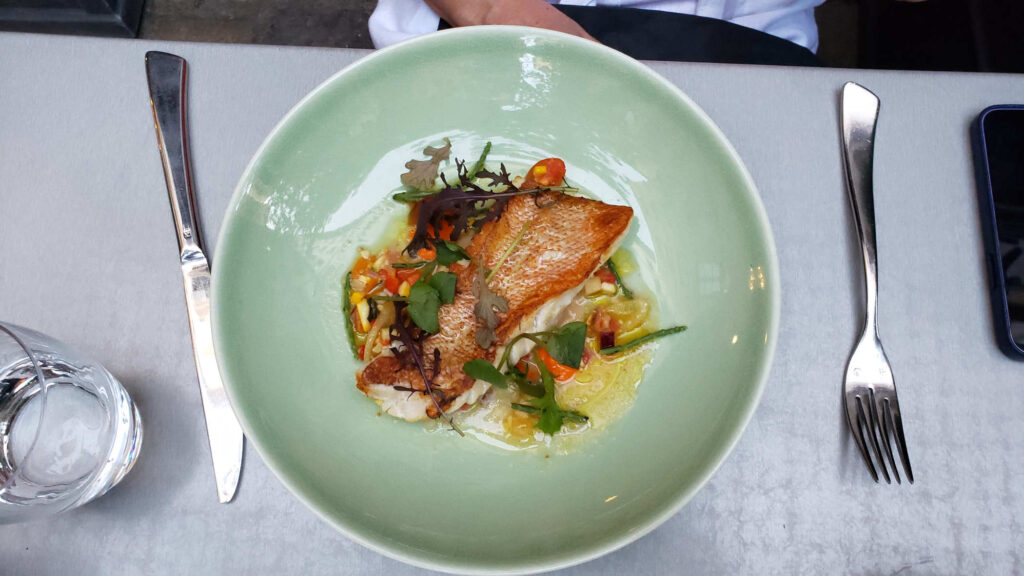If one were to think of two words that exemplify Lyon, besides being known for its culinary heritage, it would be as the city of silk and murals. There are other sights to see of course, but these two are the ones that you will not forget if you visit this city in the heart of the Auvergne-Rhône-Alpes region.

During the week of the tenth through the twelfth of August, 2021 we were fortunate to travel through Lyon. Our expectations were mixed, having known or read little of the city in the past. In fact, until we visited we had no idea of the impact that Lyon had had on the silk or weaving business in the world.

The Historic City Center
The historic part of the old city is backed up against the hill on the other side of the Saône below the basilica of Notre-Dame de Fourvière. Here you will find the old narrow streets paved in cobblestones and buildings fitting their age. The Place of the small college, right next to our hotel The Cour Des Loges, is an example of this as seen below. Though I must admit I am not a fan of walking on cobblestones and prefer the larger stoned walkways of Turin. Walking in one thunderstorm or shower will testify to their slipperiness.
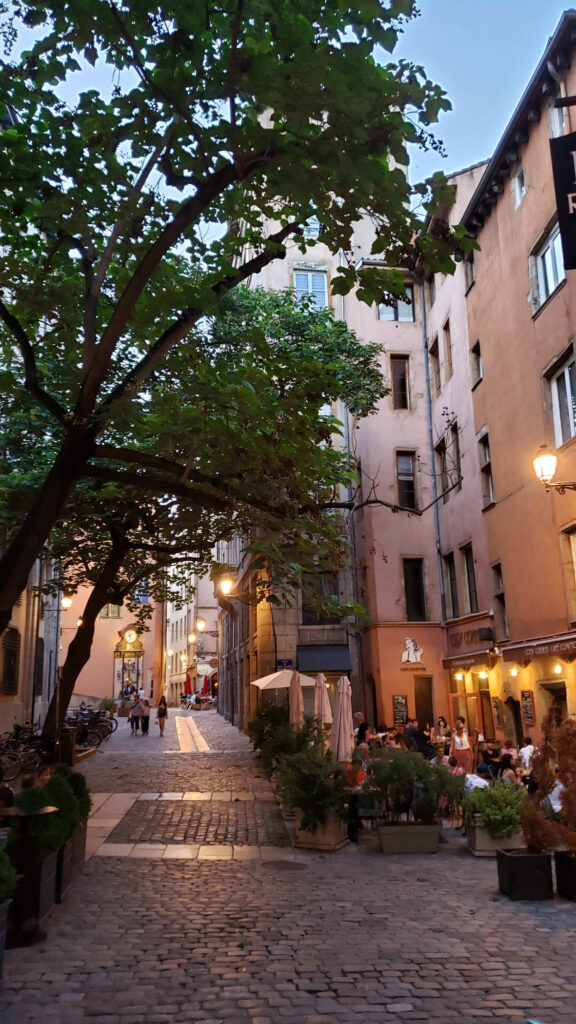
Many of the old building date back to the fourteenth and fifteenth centuries and were deeply involved in the silk trade and fabric making. This included our hotel which has several stairwells within it similar to the one above. Though they are inside the hotel, they were customarily on the outside and almost always in the form of a helix.
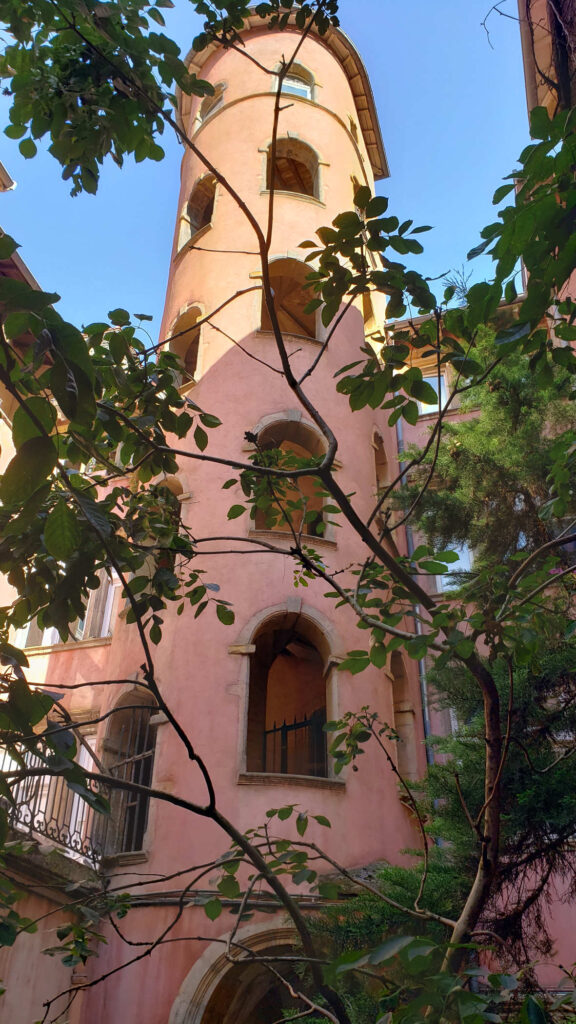
Bordering the Historic City Center to the east is the river Saône. There are many bridges that span the waterway and will bring you to other old parts of Lyon in the district in and around Bellecour.
The Place Du Bellecour sports the traditional statue of Louis XIV on a horse. Aside from a well architected space around it that serves as a park, the space seems to otherwise be devoid of purpose, it is not even paved well.

However, the area in and around the Fountain of the Jacobins seems more impressive and well designed. It is situated closer to the buildings, including a ring of trees with a beautiful fountain at the center. The only thing it appears to be missing are cafe tables and people.
Roman Ruins
There are several roman ruins spread across the city. Most are comprised of amphitheater that we used by the local population for amusement. Lyon has at least one example of twin amphitheater, which frankly I have never seen before, even in Italy. The two are adjacent to one another on the hillside overlooking Lyon and just below and to the south of the basilica atop the hill. Both still appear to be used for special events and have wooden stages carefully erected over them.
We actually arrived at the amphitheaters quite by accident, trying to find our way up to the basilica. We both knew they were there, we were just both surprised that we happened upon them in that location.
Basilica Of Notre-Dame De Fourvière
Continuing our walk up the hillside from the roman ruins you can easily see the basilica, so groping for directions on your phone is not such a big deal. The basilica is impressive, both inside and out. However, it appears to have been place on real estate where they allowed residential houses to encroach upon it. This takes away from one’s ability to get an actual appreciation of the scale of the structure from outside.

Inside is a totally different matter. There are actually two churches within the basilica, one above (the actual basilica) and one below in the crypt. Though the directions indicate crypt, in fact there numerous persons buried below, it appears to also function as a full church with pews and all.
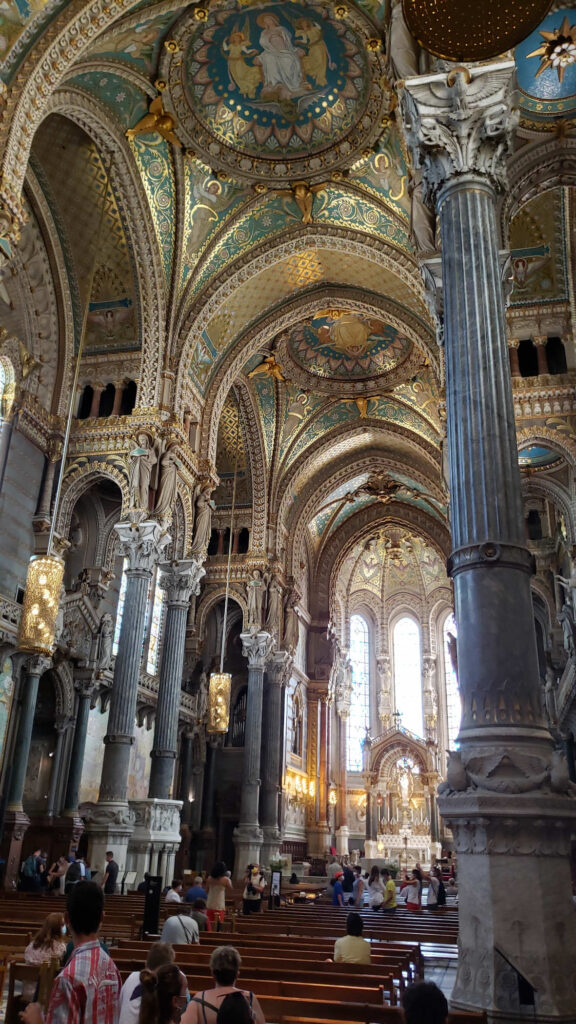
Croix Rousse
Across the river Saône from the historic district lies the district on the hill called Croix Rousse. This area is known for its historical ties to the Canuts and those who established and made the silk trade famous in Lyon.
The Museum Of The Canuts
Anyone interested the history of weaving or silk, or anyone interested in old machines should probably put this somewhere on their list of places to visit. They have a small but authentic collection of old and rare machines dating back to the time the Canuts flourished in this area.
A canut was a master weaver of gold, silver and silk thread. The word has probable origins in the word canette, which in french means spool, for which they were responsible in changing out in order for the weave to be successfully finished. The start of the industry can be traced back to its start in and around the year 1536.
The Fresco Buildings
There are several buildings in this area that have been frescoes painted on them. Some of them have been done numerous times over, in order to keep the appeal up and to changed the theme slightly.
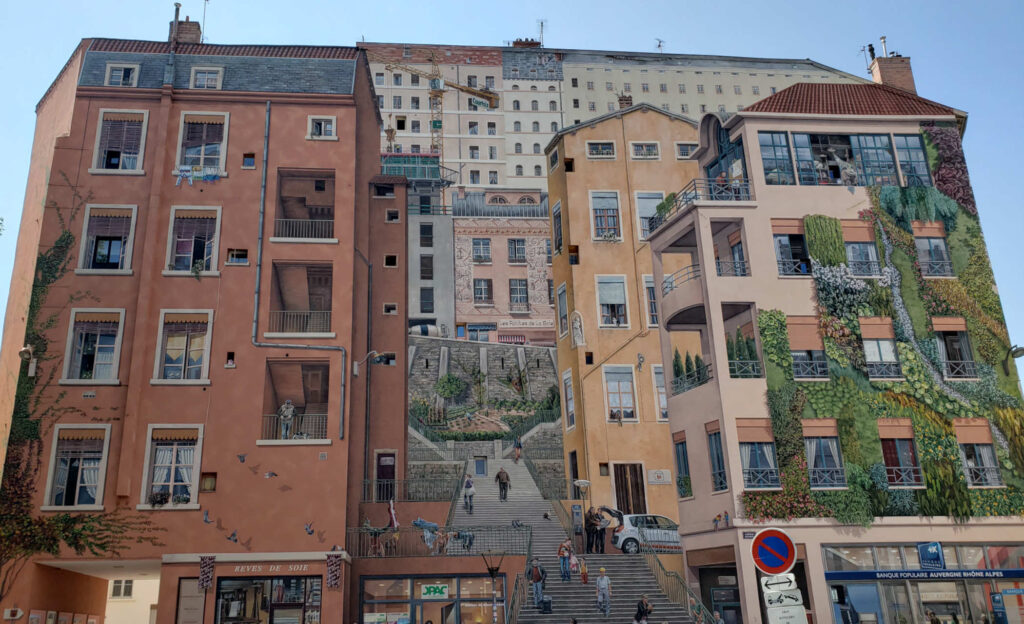
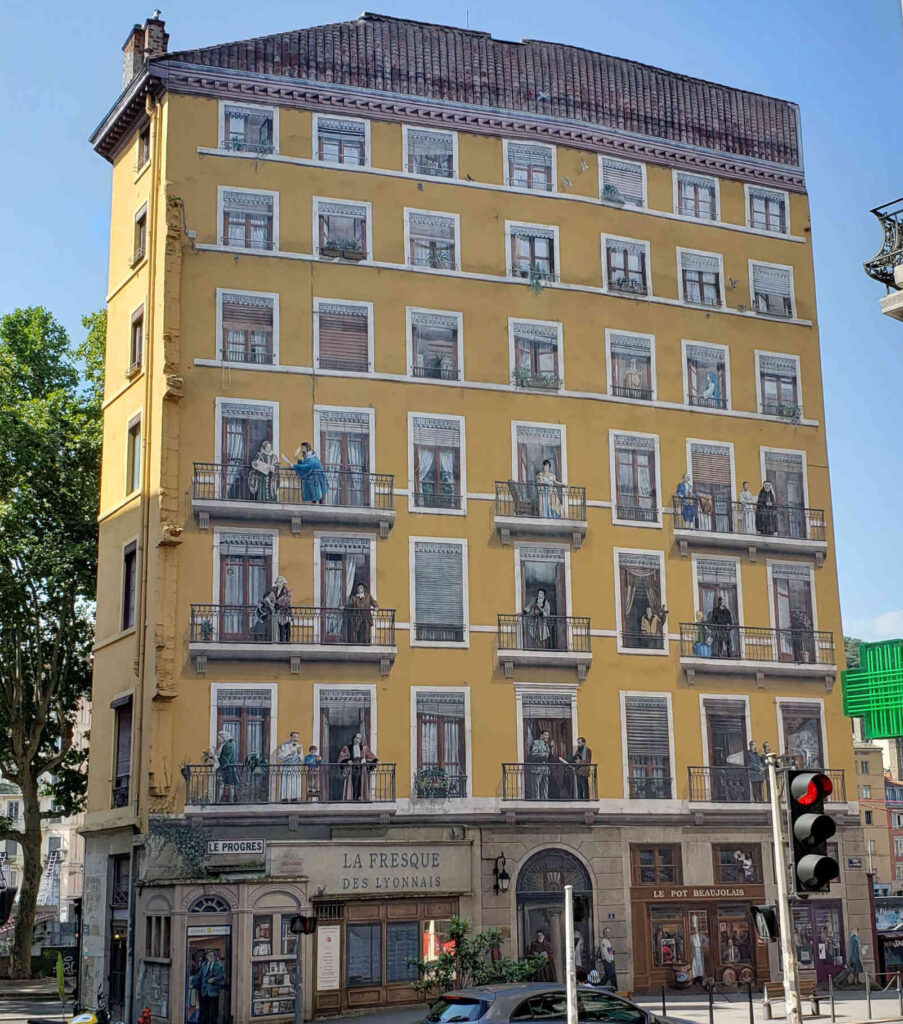
Other Weird Points Of Interest
The are at least a few unusual points of interest, where artists apparently had a hand. Owing to a profound lack of graffiti in the city my wife and I thought them interesting. Here are a few.
Restaurants
Many of the restaurants here serve local food, or as close to traditional home cooking in these parts of France as you can get and are called Bouchon, it is sometimes spelled Buchon. They are similar to Italy’s Osteria or Trattoria and being in the Auvergne-Rhône-Alpes are very meat based establishments. Most menus include sausages from the region, both sliced as an appetizer and fully cooked served with a sauce or gravy. It is obviously interesting to try, but over the course of a few days can become tiresome.
Buchon Fiston
The second restaurant we tried with such fare was Bouchon Fiston, the first being of no particular note and right across the same street. Trying to mix it up a bit I went for a soup and salad. The onion soup came with a delicious filo dough top and the salad came with melted regional cheese on toasted bread. Patti ordered a lentil salad, which came as a combo of a lentil compote and green salad on the side.
Bistrot Des Cours Des Loges
Belonging to our hotel is a small bistrot that serves many good specialties from the region. Our second evening in Lyon found us visiting it, because the main restaurant normally served by a famous chef was closed for the holiday season.
The bistro offers outside seating under the amazing trees of the Place de Petit College. We had a most enjoyable evening sampling many fine dishes and enjoying the wine.
Le Cabaretier
Our last evening in Lyon found us dodging raindrops to make it to the Cabaretier for dinner. After a rather warm afternoon the thunderstorms would not be denied, but neither would we.

The place was vacant for the most part, possibly owing to the rain, since most other places appeared equally bare. The owner and ostensibly the cook at this is a real character and listens to American music all the time. Once he learned we spoke English and were from the States, he was constantly buzzing around trying to help or playing songs he thought we would like to hear. If anything it made for an interesting evening.
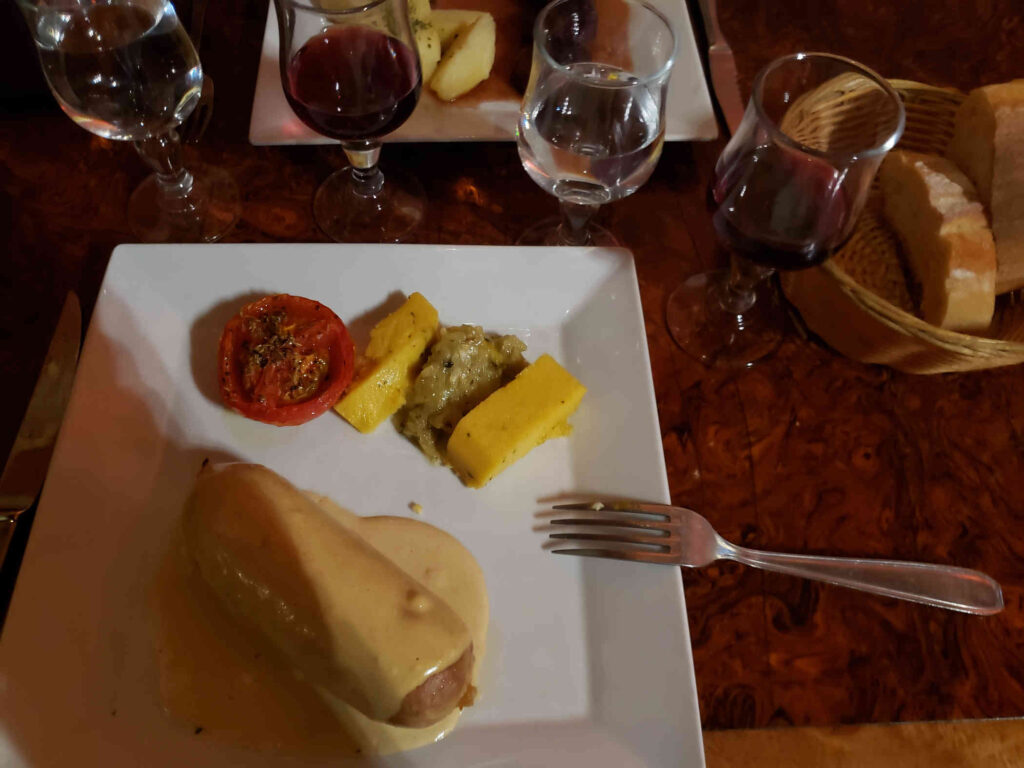
The inside looks as though it belongs as a Antiquariat and not a restaurant. But the eclectic furnishings did not take anything away from his authentic Lyonnaise food.
